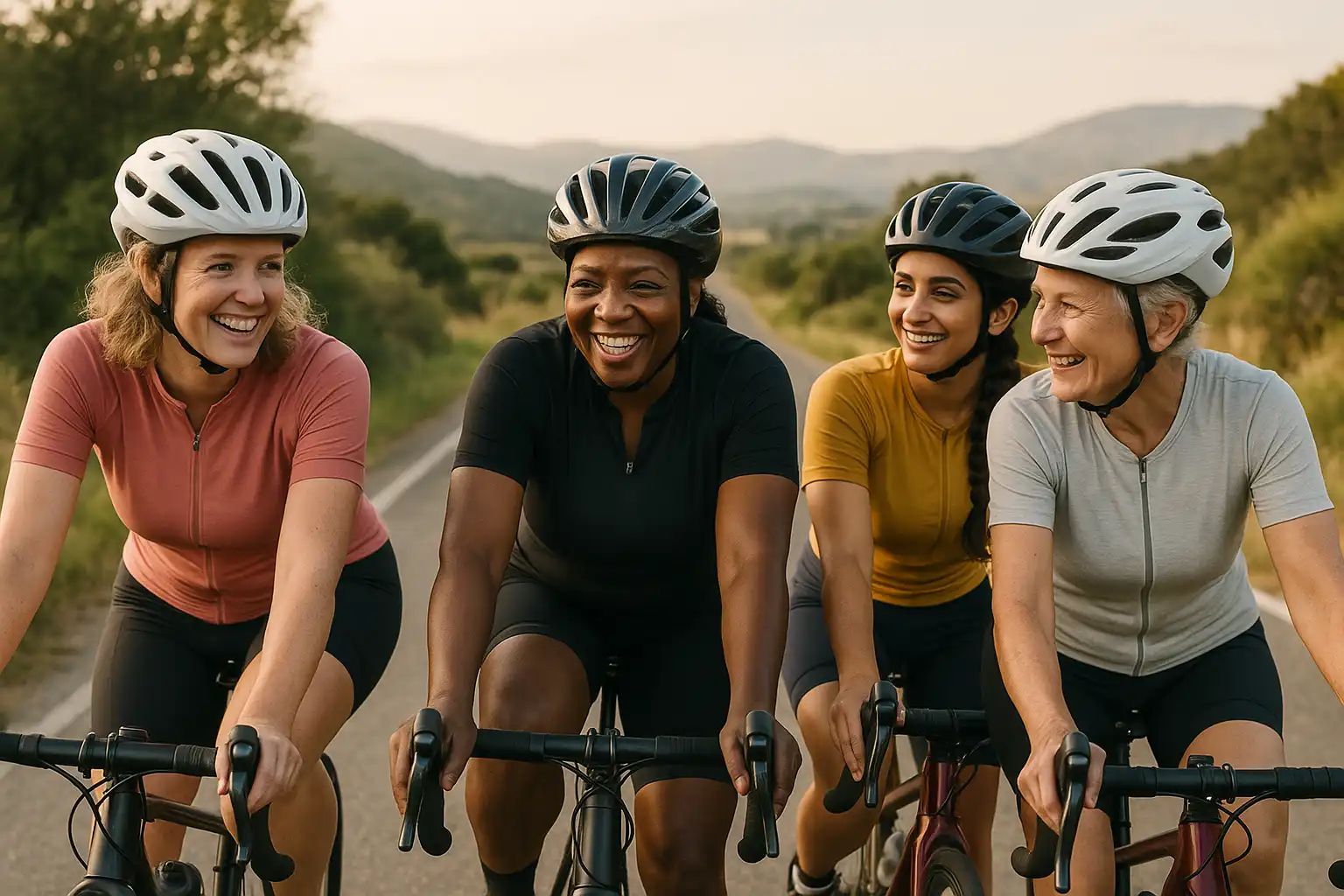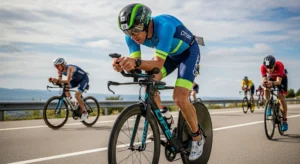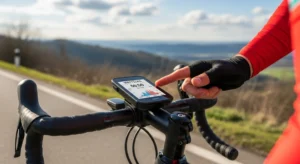Women’s cycling is experiencing unprecedented growth and recognition in 2025, with female participation rates reaching historic highs across all cycling disciplines. The Women’s WorldTour has expanded to include 28 top-tier events, professional female cyclists are achieving greater visibility and compensation, and the cycling industry is finally recognizing women as a crucial market segment deserving of dedicated products and services.
This revolution extends far beyond professional racing. Women are embracing cycling for commuting, recreation, fitness, and adventure in record numbers. The barriers that historically limited female participation in cycling—from safety concerns to inadequate gear—are being systematically addressed through innovative solutions, supportive communities, and changing cultural attitudes.
## The Numbers Tell the Story
The statistics surrounding women’s cycling participation are remarkable. Female cycling participation has increased by over 60% in the past five years, with particularly strong growth in urban areas and among younger demographics. Women now represent nearly 40% of new bike purchases, a dramatic increase from just 25% a decade ago.
The professional women’s cycling scene has experienced explosive growth, with prize money, media coverage, and sponsorship opportunities reaching new heights. The 2025 Women’s WorldTour features equal prize money to men’s events in several races, and television coverage of women’s cycling has increased by over 200% compared to 2020.
Women-specific cycling events and groups have proliferated, with thousands of local clubs, training groups, and social rides specifically designed to welcome and support female cyclists. These communities provide safe, supportive environments for women to develop skills, build confidence, and form lasting friendships through cycling.
## Breaking Down Barriers: Safety and Confidence
Safety concerns have historically been one of the primary barriers preventing women from cycling, particularly in urban environments and for transportation purposes. The cycling community and industry have responded with comprehensive approaches to address these concerns and create safer cycling environments for women.
Women-only cycling groups and training programs provide safe spaces for skill development and confidence building. These programs often focus on practical skills like bike maintenance, urban riding techniques, and group riding etiquette, helping women develop the knowledge and confidence needed for independent cycling.
Infrastructure improvements specifically designed with women’s safety in mind are becoming more common. Well-lit bike paths, secure bike parking, and protected bike lanes help address the safety concerns that disproportionately affect women’s cycling participation.
Technology solutions are also playing a role in improving safety for female cyclists. GPS tracking devices, emergency communication systems, and safety apps designed specifically for women provide additional peace of mind and security for solo riding.
## Gear Innovation: Designed by Women, for Women
The cycling industry has finally recognized that women’s cycling needs extend far beyond simply making products smaller and pink. Modern women’s cycling gear is designed with genuine understanding of female anatomy, preferences, and riding styles, resulting in products that perform better and provide superior comfort and functionality.
Women-specific bike geometry has evolved significantly, with manufacturers conducting extensive research into female body proportions, flexibility, and riding preferences. Modern women’s bikes feature optimized frame geometry, component selection, and fit characteristics that provide better performance and comfort for female riders.
Saddle technology has been particularly important in improving women’s cycling comfort. Advanced saddle designs use pressure mapping, anatomical research, and extensive testing with female riders to create saddles that provide superior comfort and support for women’s anatomy.
Clothing and apparel designed specifically for women has moved beyond basic sizing adjustments to incorporate features that address women’s specific needs and preferences. From improved chamois design to better temperature regulation and more flattering cuts, women’s cycling apparel is finally receiving the attention and innovation it deserves.
Safety gear designed for women includes helmets with ponytail-friendly designs, lights and reflective gear in colors and styles that appeal to female cyclists, and protective equipment that fits properly and provides adequate protection for women’s body shapes.
## Professional Cycling: Equality and Opportunity
The professional women’s cycling landscape has been transformed in 2025, with unprecedented opportunities, recognition, and compensation for female athletes. The expansion of the Women’s WorldTour to 28 events provides more racing opportunities and greater visibility for women’s professional cycling.
Equal prize money initiatives are gaining momentum, with several major races now offering identical prize pools for men’s and women’s events. This financial equality is helping to professionalize women’s cycling and attract more talented athletes to the sport.
Media coverage of women’s cycling has increased dramatically, with dedicated television coverage, streaming options, and social media content providing fans with unprecedented access to women’s racing. This increased visibility is helping to build fan bases and attract sponsors to women’s cycling.
Team development and support structures for women’s cycling have improved significantly, with more teams offering professional contracts, coaching support, and career development opportunities for female cyclists. The establishment of minimum wage standards and improved working conditions has helped professionalize the sport.
Youth development programs specifically focused on girls and young women are creating pathways for the next generation of female cyclists. These programs address the unique challenges that young women face in cycling and provide supportive environments for skill and confidence development.
## Community Building: The Power of Connection
The growth of women’s cycling communities has been one of the most significant developments in the sport. These communities provide support, encouragement, and friendship that extends far beyond cycling itself, creating networks that enrich women’s lives in multiple ways.
Local women’s cycling groups have become increasingly sophisticated, offering structured training programs, social events, and advocacy initiatives. Many groups provide mentorship programs that pair experienced cyclists with newcomers, helping to accelerate skill development and build confidence.
Online communities and social media platforms have created global networks of female cyclists who share experiences, advice, and encouragement. These digital communities provide support and inspiration for women regardless of their location or local cycling community availability.
Women’s cycling events and festivals have become major attractions, combining competitive racing with education, vendor exhibitions, and social activities. These events celebrate women’s cycling achievements while providing opportunities for learning, networking, and community building.
Advocacy and activism within women’s cycling communities are driving positive changes in infrastructure, policy, and industry practices. Women cyclists are increasingly organized and vocal about issues affecting their participation and safety, leading to meaningful improvements in cycling conditions.
## Health and Wellness: Cycling for Life
Women are increasingly recognizing cycling as an ideal form of exercise that provides cardiovascular benefits, strength building, and mental health improvements while being gentle on joints and accessible across different fitness levels and life stages.
Cycling during pregnancy and postpartum recovery has become more accepted and supported, with specialized programs and equipment designed to help women maintain active lifestyles during these important life phases. Medical professionals increasingly recommend cycling as a safe and beneficial form of exercise for pregnant women.
Mental health benefits of cycling are particularly significant for women, with research showing that regular cycling can help reduce anxiety, depression, and stress while improving overall mood and well-being. The social aspects of group cycling provide additional mental health benefits through community connection and support.
Cycling as family activity is growing in popularity, with more women leading family cycling adventures and using cycling as a way to model active lifestyles for their children. Cargo bikes and family cycling equipment make it easier for women to include cycling in their family activities.
Age-inclusive cycling programs recognize that women’s cycling interests and needs change throughout their lives, providing appropriate programs and support for women of all ages, from young girls to seniors.




